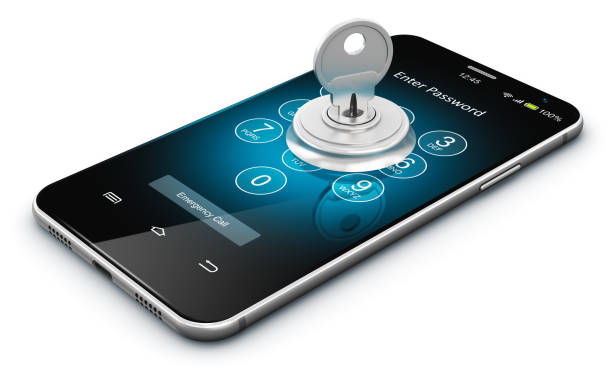
Mobile Phone Security: Protecting Your Data in a Digital World
Mobile phones have evolved from simple communication tools into powerful devices capable of managing almost every aspect of our daily lives. From personal banking to social media, emails to sensitive business data, and even health tracking, our smartphones store vast amounts of information. However, this growing reliance on mobile devices also brings about significant security challenges. With cyber threats on the rise, it is essential to prioritize mobile phone security to protect our personal data and privacy. This blog post will dive deep into the critical aspects of mobile security, common threats, and best practices for safeguarding your device and data.
Why Mobile Security Matters
Mobile phones are prime targets for hackers because they store personal and sensitive information, including:
- Bank account details and credit card information
- Emails, social media, and other communication apps
- Passwords, contacts, and personal files (e.g., photos, documents)
- Location data
- Business and corporate data for employees using phones for work purposes (BYOD)
With such a wealth of information available, compromised mobile security can lead to:
- Identity theft
- Financial loss
- Privacy invasion
- Corporate espionage
In today’s interconnected world, it’s crucial to understand the potential threats and how to mitigate them effectively.
Common Mobile Phone Security Threats
1. Malware
Mobile malware includes malicious software like viruses, trojans, spyware, and ransomware designed to steal data, track user behavior, or damage a device. These types of malware often come through infected apps, emails, or links, posing a risk when users unknowingly install them.
2. Phishing Attacks
Phishing involves deceptive attempts, often through email or text messages, to trick users into revealing personal information, such as passwords or financial information. Mobile devices are especially vulnerable due to smaller screens, which make it harder to detect suspicious links and messages.
3. Unsecured Wi-Fi Networks
Public Wi-Fi networks, such as those in coffee shops, airports, or malls, pose significant security risks. Hackers can intercept unencrypted data transmitted over these networks or launch “man-in-the-middle” attacks, gaining access to private communications and sensitive data.
4. App Vulnerabilities
Apps downloaded from unofficial sources or third-party websites may carry hidden malware or request excessive permissions. Even legitimate apps can have vulnerabilities if they aren’t regularly updated, making them a potential gateway for hackers.
5. Outdated Operating Systems
Failing to update your phone’s operating system regularly leaves it vulnerable to known security flaws. Operating system updates often include critical security patches that protect against newly discovered threats.
6. SIM Swapping
SIM swapping occurs when a hacker gains control of a victim’s mobile number by tricking the phone provider into transferring the number to a new SIM card. This allows the attacker to bypass two-factor authentication (2FA), access online accounts, and even reset passwords.
7. Bluetooth Vulnerabilities
Leaving Bluetooth enabled can expose your device to unauthorized access or file transfers, especially in public places. Attackers can exploit these vulnerabilities to access your data or install malicious software.
Best Practices for Mobile Phone Security
While the threats to mobile security are numerous, there are several steps you can take to significantly reduce the risk of falling victim to an attack.
1. Use Strong Authentication Methods
Ensure your phone is protected by a strong passcode, fingerprint scan, or facial recognition. Avoid using simple patterns or passwords that can be easily guessed (e.g., “1234” or “password”). Multi-factor authentication (MFA) is also highly recommended for securing sensitive apps, especially for banking and email services.
2. Install Apps from Trusted Sources
Only download apps from official stores like the Apple App Store or Google Play Store. These platforms have security measures to review and block malicious apps, unlike third-party websites that might host infected software.
3. Keep Your Operating System and Apps Updated
Regularly updating your phone’s operating system and apps ensures you receive the latest security patches. Many security breaches occur because of unpatched vulnerabilities, so staying up-to-date is a simple yet effective security measure.
4. Enable Encryption
Modern smartphones come with built-in encryption features, which scramble your data, making it inaccessible to unauthorized users. Check your phone’s security settings and enable encryption if it’s not activated by default.
5. Use a VPN on Public Wi-Fi
When connecting to public Wi-Fi, always use a Virtual Private Network (VPN). A VPN encrypts your internet connection, making it difficult for hackers to intercept your data. This is especially important when accessing sensitive information, such as online banking.
6. Be Cautious with Links and Attachments
Avoid clicking on suspicious links in emails, text messages, or social media posts, especially if they come from unknown senders. Phishing attacks are common on mobile phones, and once you click on a malicious link, your device could be compromised.
7. Limit App Permissions
Many apps request access to unnecessary data, like your location, contacts, or microphone. Be mindful of the permissions you grant to apps and only allow what is essential for their functionality. Review app permissions regularly in your phone’s settings.
8. Disable Bluetooth and Wi-Fi When Not in Use
Bluetooth and Wi-Fi can expose your phone to attacks if left on in public places. Turn off these features when not in use to reduce the risk of unauthorized connections or data interceptions.
9. Use Security Software
Install reputable mobile security software to add an extra layer of protection. These programs can detect and remove malware, block phishing attempts, and monitor suspicious activity on your device.
10. Enable Remote Wipe
In case your phone is lost or stolen, remote wipe allows you to erase all data from the device remotely. Both iPhones (via iCloud) and Android devices (via Google Find My Device) offer this feature, ensuring that your sensitive data doesn’t fall into the wrong hands.
Also Read
Special Considerations for Business Use (BYOD)
Many companies allow employees to use their personal devices for work purposes, known as “Bring Your Own Device” (BYOD) policies. While convenient, this approach introduces potential security risks, as personal devices may not have the same security protocols as corporate-owned ones.
To enhance mobile security in business environments, companies should implement the following:
- Mobile Device Management (MDM): MDM software helps IT teams monitor, manage, and secure mobile devices used within the organization.
- Employee Education: Regularly train employees on security best practices, such as recognizing phishing attacks and safeguarding corporate data.
- Company-Wide Encryption Policies: Ensure all devices accessing corporate data have encryption enabled.
- App Whitelisting: Restrict app installations on work devices to trusted, pre-approved apps.
Future Trends in Mobile Security
As technology continues to advance, so too will the methods hackers use to target mobile devices. Here are some future trends in mobile security:
- Biometric Security: The use of biometrics, such as fingerprint scanning and facial recognition, will continue to rise as companies develop more sophisticated ways to verify user identity securely.
- AI and Machine Learning: These technologies will enhance mobile security by analyzing user behavior and identifying unusual patterns, potentially detecting threats before they cause damage.
- Zero-Trust Architecture: This security model assumes that every device, user, and app is untrustworthy until proven otherwise. It limits access to sensitive information by constantly verifying the identity of users and devices.
- 5G Networks: While 5G promises faster speeds and greater connectivity, it also brings new security challenges. Ensuring secure data transmission over 5G will be critical in the coming years.
Mobile phone security is an essential aspect of modern life. With hackers constantly developing new tactics, staying vigilant and adopting the best security practices is vital to protecting your personal and sensitive information. By following the steps outlined above, you can significantly reduce the risk of mobile security threats and enjoy a safer digital experience.




